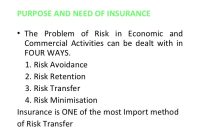How to Lower Your Insurance Premiums Without Losing Coverage is a topic that resonates with many individuals looking to save money while ensuring they maintain adequate protection. Insurance premiums can often feel overwhelming, and finding ways to reduce these costs without sacrificing coverage is essential. In this discussion, we’ll explore various strategies that help you navigate the insurance landscape efficiently, making informed decisions that keep both your wallet and peace of mind intact.
From understanding the nuances of your policy to leveraging discounts, we’ll delve into practical approaches that can lead to significant savings. The journey towards lowering your insurance premiums is not just about cutting costs, but also about enhancing your overall coverage experience.
In today’s fast-paced world, the importance of effective communication cannot be overstated. Whether you’re connecting with colleagues, engaging with clients, or simply having a casual chat with a friend, the way you express yourself plays a crucial role in how your message is received. In this article, we will delve into the nuances of effective communication, explore different styles, and uncover tips to enhance your interpersonal skills.### Understanding CommunicationAt its core, communication is the process of exchanging information, thoughts, or feelings between individuals.
This can occur through various channels, including verbal, non-verbal, written, and visual methods. Each mode of communication comes with its own set of advantages and challenges, but what remains essential is the clarity of the message being conveyed. Verbal Communication: This is perhaps the most direct form of communication, involving spoken words. It can be formal, such as in professional settings, or informal, like casual conversations among friends.
Tone, pitch, and speed also play significant roles in how a verbal message is interpreted. Non-verbal Communication: Often referred to as body language, this includes gestures, facial expressions, posture, and eye contact. Non-verbal cues can enhance or contradict what is being said verbally. Being aware of your body language can significantly affect how your message is perceived. Written Communication: From emails to reports, written communication is a vital component of professional life.
Clarity, grammar, and structure are essential to ensure your message is understood as intended. This form of communication allows for reflection and editing, which can lead to clearer messaging. Visual Communication: This includes all forms of visual content, such as charts, graphs, and images. Visuals can simplify complex information, making it more accessible and easier to understand.### Elements of Effective CommunicationTo communicate effectively, several key elements should be considered:
1. Clarity and Conciseness
Being clear and to the point is critical. Avoid jargon and overly complex phrases that may confuse your audience. Stick to simple language that conveys your message without unnecessary embellishments.
2. Active Listening

Communication is a two-way street. Paying attention to the speaker, nodding, and providing feedback can create a more engaging conversation. Active listening shows respect and helps to build rapport.
3. Empathy
Understanding the emotional state and perspective of others can transform a conversation. Empathy allows you to connect on a deeper level, fostering a more meaningful dialogue.
4. Confidence
Displaying confidence when speaking can instill trust and credibility. Practice your delivery, maintain good posture, and make eye contact to project assurance.
5. Feedback
Constructive feedback is invaluable. When you provide or receive feedback, it can lead to improvements and a better understanding of the message being communicated.### Different Styles of CommunicationRecognizing your communication style and adapting to others can improve interactions significantly. Here are a few common styles:
Assertive Communication
This style is characterized by confidence and the ability to express thoughts clearly while respecting others. Assertive communicators advocate for themselves without being aggressive.
Passive Communication
This style often involves avoiding confrontation and failing to express one’s own needs and opinions. While it may seem easier, it can lead to misunderstandings and resentment.
Aggressive Communication
Aggressive communicators express their needs and opinions in a forceful manner, often disregarding others’ feelings. This can create conflict and hinder healthy communication.
Passive-Aggressive Communication
Individuals using this style may express negative feelings indirectly rather than openly addressing issues. This can create confusion and frustration for others.### Tips to Enhance Communication SkillsImproving your communication skills is a lifelong journey. Here are some practical tips to help you along the way:
1. Practice Active Listening
Engage fully when someone is speaking. Avoid interrupting, and instead, focus on understanding their message. Reflect back what you’ve heard to ensure comprehension.
2. Know Your Audience
Tailor your message according to the audience. Consider their background, expectations, and preferences to ensure your communication resonates.
3. Be Open to Feedback
Invite others to share their thoughts on your communication style. Use their insights to make adjustments and improve.
4. Use Clear Language
Avoid ambiguity. Use specific terms and examples to clarify your points. This will help reduce misunderstandings.
5. Stay Calm Under Pressure
In challenging conversations, take a deep breath and remain composed. This will help you articulate your thoughts better and maintain a constructive dialogue.
6. Utilize Technology
In today’s digital age, tools like video conferencing, instant messaging, and collaborative platforms can enhance communication. Familiarize yourself with different technologies to leverage them effectively.
7. Engage in Public Speaking
Seek opportunities to speak in front of groups. This can boost your confidence and help you refine your verbal communication skills.### The Role of Communication in RelationshipsEffective communication is the backbone of any relationship, whether it’s personal or professional. It helps to establish trust, resolve conflicts, and foster intimacy. In personal relationships, open discussions about feelings, expectations, and boundaries contribute to a deeper bond.
In the workplace, clear communication can lead to better collaboration, increased productivity, and a positive work culture.### ConclusionIn conclusion, mastering the art of communication is essential for success in all aspects of life. By understanding the different forms of communication, recognizing your style, and applying effective strategies, you can enhance your interpersonal skills. Remember, communication is not just about speaking; it’s about connecting.
So, take the time to cultivate these skills, and watch how they transform your interactions both personally and professionally. Embrace the journey of becoming a more effective communicator and enjoy the benefits it brings to your relationships and career.


